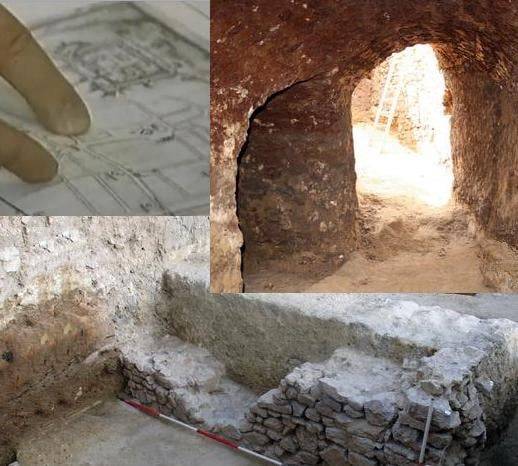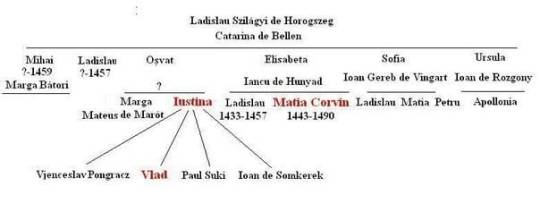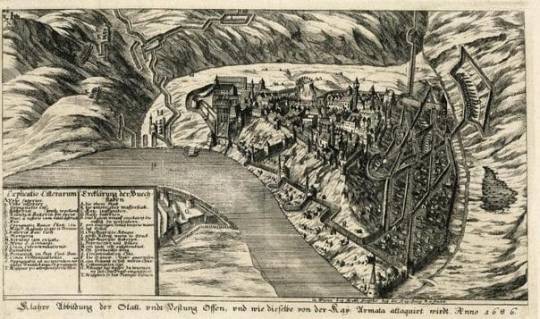#DRAGWLYAHAZA
Explore tagged Tumblr posts
Text





ENG: DRAGWLYAHAZA " or Vlad Dragulia Tepes in the city of Pécs with his wife Justina. What document became the basis of assumptions about who exactly became the Hungarian wife of Vlad Dracula? And why Justina? And not the previously assumed Ilona Silagi (whose documented connection with the voivode Vlad Tepes was not confirmed in any way, being only an assumption until that time). And the turning point in this issue was the contract of sale of September 10, 1489. On September 10, 1489, a purchase and sale agreement was signed in Pec for a property located in the city center. The seller was a certain Jacob Kun from Rozsály, a member of the Kun family, the family with the largest land holdings in Satmar and Ugocha. Having become close to the bishop of Pec, Jacob decides to move to the western part of Hungary. This document mentions the Dragwlyahaza house (Casa lui Dragwlya, Draguli house) built by a certain Dragul voivode, Dragwlya. This building was a two-story stone house next to the church of St. Birtalan and bordered on the east with the property of Benedicto Szabo. From the south and west of the house there was a city road, and in the north the house bordered the house of the head of the church of St. Catherine. After the death of the voivode, called Dragwlya, the widow of Justina (Iustina) donated the house to the subject of the voivode Dragwlya (write – famulus), Dionysius. However, this subject of the voivode of Draguli, Dionysius, by coincidence, also became objectionable to King Corvinus, because he was executed by a court and jury for robbery (Maria Roche's article talks about murder, but the translator did not find the words of the murder itself, so...), (the king needed a house in the center). After the execution, the King of Hungary, Corwin and the Bishop of Pec "donated" the house to one of the wealthiest gentlemen , Jacob Kuhn. Jacob Kuhn, who did not need a house, in turn, sells the house for 200 florins ("pro ducentis florenis", the exact amount that the voivode Dragul asked in his letter for the construction of a house, as previously thought, in Sibiu) George of Gyula, his sons John, Grgora and Mihai. The very nickname of the house , Dragwlyahaza, hints that local citizens associated it with the voivode Dragula. It is impossible to draw many conclusions from this document at once, since neither further research nor excavations have given any more indications of the voivode of Wallachia. However, if this document is original, then it is invaluable in its kind and gives the keys to further search. The name of the Hungarian wife, Justina, the name of a loyal subject, Dionysius, who earned a house with good service, and then did not like the king and was executed for a strange charge of theft and murder for a noble gentleman who owns such an honorable house. And also-200 gold florins . Until now, attempts are being systematically made to determine the exact location of that house in the city center, according to the description in this document. It is also noted that a fairly high price for a house indicates its good location. This house was a corner house, it was part of a number of buildings located near the church destroyed during the Turkish occupation, the Gazi Kasim Pasha mosque was built on that place. On the city plan of 1689, the engineer Joseph de Guy, depicts a number of buildings in the center of the city, which are divided in two in the center of the city. Archaeologists and historians suggest that this house was located just on the south-western side, on the corner. Excavations began to be carried out in this part of the city and as a result, ruins of medieval buildings and a basement were found, but no traces or utensils that could even casually indicate the ruler of Wallachia were found. * The medieval city of Pest was called Quinque Ecclesiae, Five Churches. The Document: ""We have recorded the testimony of the diocese of the Five Churches (the city of Pec), which was presented to our presence without any compulsion, by a nobleman named Jacob Kuhn from Rozsal, the castellan of the
fortress of the Five Churches (sovr. Pech), and which consists of the following: His stone house, called the Draguli house and erected in the city of Five Churches (modern Peche), to which, as evidenced, the site of Benedict Zabon adjoins on the east side, on the south and west – public thoroughfares, on the north side – the house of the head of the altar of the Holy Virgin Catherine, erected in the parish church of St. Bartholomew the Apostle, founded in the aforementioned city of Five Churches; the very house and plot of Justina, the widow of the late voivode Draguli, gave, as is known, for eternal use to a certain servant Dionysius for his official services, but later, when this Dionysius was convicted of engaging in robbery and because of this, by the order of the royal majesty, the judge and jury of citizens of this city of Five Churches, as the aforementioned Jacob Kuhn tells, was sentenced by the court to death by hanging, this house and this plot, the king and others, as well as the venerable Mr. Sigismund, bishop of this diocese of our Five Churches, they were transferred to the eternal free privileged possession of the said Jacob Kuhn for his faithful service, having announced the document about the above-mentioned committed crime, Jacob Kuhn sold and transferred for the two hundred florins paid to him in full in pure gold with the eternal and irrevocable right of holding, possession and use, together with all his rights and privileges, with all other benefits, with everything that rightfully belongs here and should relate, with everything, of course, that the aforementioned Jacob Kuhn had previously used and owned, with owning an empty house, located on the south side, and the plot under the house, the glorious George of Gyula, as well as his sons John, Gregory and Michael and all their descendants and heirs, without reserving any right and any possession of the rights of the lord, but completely all the right and all the possession of the rights of the lord, whatever the aforementioned Jacob Kuhn hoped to have in the future in relation to this house, he transferred to the aforementioned George, John, Gregory and Michael of Gyula, as well as to their heirs, which we fully we confirm the right with an effective certificate of the compiled record. Given on the fifth day after the feast of the Nativity of the most glorious Virgin Mary in the year of the Lord one thousand four hundred and eighty-ninth."" In the appendix to the article: 1. Photo of the document on the sale of the house "Dragwlyahaza", (Slovak People's Archive). 2. The center of the Oven in 1686 (map details) . 3. Pest and Buda (Matthias Greischer, 1689). 4. Family tree . 5. Excavations. _______________________ RU DRAGWLYAHAZA" или Влад Драгуля Цепеш в городе Печ с женой Иустиной. Какой же документ стал основой предположений о том, кто именно стал венгерской женой Влада Драгули? И почему Иустина? А не ранее предполагаемая Илона Силаги (документально связь которой с воеводой Владом Цепешем никак не подтверждалась, являясь до этого времени лишь предположением). А переломным документном в этом вопросе стал договор купли продажи от 10 сентября 1489 года. 10 сентября 1489 в Печ был заключен договор купли-продажи на имущество, находящееся в центре города. В качестве продавца выступал некий Якоб Кун (Jacob Kun) из Розсаля (Rozsály), член семейства Кун, семейства с самыми крупными земельными владениями в Сатмар и Угоча. Сблизившись с епископом из Печ, Якоб решает переехать в западную часть Венгрии. В этом документе упоминается дом Dragwlyahaza (Casa lui Dragwlya, дом Драгули) построен неким Драгулей воеводой, Dragwlya. Данное строение представляло собой двухэтажный каменный дом рядом с церковью святого Бирталана и граничило на востоке с имуществом Бенедикто Сабо. С юга и запада дома проходила городская дорога, а на севере дом граничил с домом главы церкви святой Екатерины. После гибели воеводы , именуемого Dragwlya, вдова Иустина (Iustina) пожертвовала дом подданному воеводы Dragwlya (пишут – famulus), Дионисию. Однако, данный подданный воеводы
Драгули, Дионисий, по стечению обстоятельств, также стал неугоден королю Корвину, потому казнен по решению суда и присяжных за разбой (в статье Марии Рошу говорится об убийстве, но слова самого убийства переводчик не нашел, так что...), (дом в центре потребовался королю). После казни король Венгрии, Корвин и епископ Печ «пожертвовали» дом одному из самых состоятельных господ , Якобу Куну. Не нуждавшийся в доме Якоб Кун, в свою очередь, продает дом за 200 флоринов ( «pro ducentis florenis», точная сумма, которую просил в своем письме воевода Драгуля на постройку дома, как ранее считалось, в Сибиу) Георгу из Дьюла, его сыновьям Иоану, Гргоре и Михаю. Само прозвище дома , Dragwlyahaza, намекает на то, что местные горожане ассоциировали его с воеводой Драгулой. Много выводов из данного документа сразу сделать не получается, поскольку ни исследования дальнейшие, ни раскопки, не дали более никаких указаний на воеводу Валахии. Однако, если данный документ подлинник, то он бесценный в своем роде и дает ключи к дальнейшему поиску. Имя венгерской жены, Юстина, имя верного подданного, Дионисий, что заслужил хорошей службой дом, а после пришелся не по душе королю и был казнен за странное для знатного господина, владеющего столь почетным домом, обвинение в краже и убийстве. А также - 200 золотых флорин . До сих пор систематически предпринимаются попытки точного установления расположения того дома в центре города, согласно описанию в данном документе. Также отмечают, что довольно высокая цена на дом указывает и о его удачном расположении. Этот дом был угловым, являлся частью ряда зданий, расположенных вблизи с разрушенной в ходе турецкой оккупации церковью , на том месте была построена мечеть Гази Касим-паши. На плане города 1689 года, инженера Жозефа де Гаюи, изо��ражает в центре города ряд зданий, которые делятся надвое в центре города. Археолги и историки предполагают, что как разна юго-западной стороне, на углу и был расположен данный дом. В этой части города стали проводить раскопки и в результате были найдены руины средневековых зданий и подвал, но никаких следов или утвари, которые могли бы хоть вскользь указывать на господаря Валахии , не обнаружили. *Средневековый город Пешт называли Quinque Ecclesiae , Пять Церквей. Текст договора, переведенный пользователем лингвофорума Georgos Therapon по просьбе администратора сообщества на русский: "Мы записали свидетельство епархии Пяти церквей (город Печ), которое без какого-либо принуждения представил в нашем присутствие, самолично представ перед нами, знатный человек по имени Якоб Кун из Розсаля, кастелян крепости Пяти церквей (совр. Печ), и которое состоит в следующем: Свой каменный дом, называемый домом Драгули и возведенный в городе Пяти церквей (совр. Печ), к которому, как свидетельствуют, с восточной стороны примыкает участок Бенедикта Забона, с южной и западной – общественные проезжие улицы, с северной же стороны – дом главы алтаря святой девы Екатерины, воздвигнутого в приходской церкви святого апостола Бартоломея, основанной в упомянутом городе Пяти церквей; тот самый дом и участок Иустина, вдова покойного воеводы Драгули, передала, как известно, в вечное пользование некоему слуге Дионисию за его служебные заслуги, но в последующем, когда этот Дионисий был уличен в занятии разбоем и из-за этого, по повелению королевского величества, судьей и присяжными гражданами этого города Пяти церквей, как рассказывает упомянутый Якоб Кун, был приговорен судом к смерти через повешение, этот дом и этот участок светлейший господин Матияш, король и прочие, а также достопочтенный господин Сигизмунд, епископ этой нашей епархии Пяти церквей, передали в вечное свободное привилегированное владение упомянутому Якобу Куну за его верную службу, огласив документ о вышеупомянутом совершенном преступлении, Якоб Кун за выплаченные ему сполна двести флоринов чистым золотом продал и передал с вечным и неотзывным правом держания, владения и пользования вместе со всеми своими правами и привилегиями, со всеми прочими выгодами, со всем, что по праву сюда относится и должно относиться, со всем тем,
разумеется, чем до этого пользовался и владел вышеупомянутый Якоб Кун, с бывшим у него в открытом владении пустующим домом, находящи��ся с южной стороны, и участком под домом, славным Георгию из Дьюла, а также его сыновьям Иоанну, Григорию и Михаилу и всем их потомкам и наследникам, не оставив за собой никакого права и никакого обладания правами господина, но полностью все право и все обладание правами господина, какие бы ни надеялся иметь в последующем по отношению к этому дому вышеупомянутый Якоб Кун, он перенес на вышеупомянутых Георгия, Иоанна, Григория и Михаила из Дьюла, а также на их наследников, что мы с полным правом подтверждаем действенным свидетельством составленной записи. Дано в пятый день после праздника Рождества славнейшей Девы Марии в год Господень тысяча четыреста восемьдесят девятый". В приложении к статье: 1.Фото документа о продаже дома "Dragwlyahaza" , (Словацкий Народный Архив ). 2.Центр Печ в 1686 (детали карты) . 3. Пешт и Буда (Матьяш Грайшер, 1689). 4. Семейное дерево . 5. Раскопки. ___________________ Document original in Latin: “Nos capitulum ecclesie Quinqueecclesiensis memorie commendamus, quod egregius Iacobus Kwndictus de Rosaal castellanus castri Quinqueecclesiensis coram nobis personaliter constitutus libereconfessus extitit in hunc modum: quomodo ipse quandam domum suam lapideam, Dragwlyahaza vocatam in civitate Quinqueecclesiensi fundatam, cui ab orientali fundus Benedicti Zabo, meridionali et occidentali vie plaustrales communes, aquilonari vero plagis domus rectoratusaltaris Sancte Katherine virginis in ecclesia parochiali Sancti Bartholomei apostoli in dictacivitate Quinqueecclesiensi fundata constructi contigue vicinari asseruntur, quam quidem domum sive fundum generosa domina Iustina relicta condam Dragwlya waywode cuidam Dionisio famulosuo ob servitiorum suorum merita in perpetuum contulisse perhibetur, sed postmodum eodem Dionisio in crimine latrocinii deprehenso et ob id iussu regie maiestatis per iudicem et iuratos cives huius civitatis Quinqueecclesiensis, uti idem Iacobus Kwn retulit, laqueo mortis iuridice condempnato eandem dom[um sive fun]dum idem serenissimus dominus Mathias rex etc. acreverendus dominus Sigismundus episcopus huius ecclesie nostre Quinqueecclesiensis dicto Iacobo Kwn pro fidelibus servitiis suis per notam dicti commisso criminis manifestam sub certis libertatibus et privilegiis contulisset perhenniter possidendam egregiis Georgio de Gywla ac Iohanni, Gregorio et Michaeli filiis eiusdem ipsorumque heredibus et posteritatibus universis pro ducentis florenis auri puri iam plene persolutis et perceptis dedisset et vendidisset iure perpetuo et irrevocabiliter tenendam possidendam pariter et habendam simul cum cunctis suis libertatibus et privilegiis, aliis etiam utilitatibus et pertinentiis ad eandem de iure spectantibus et pertinere debentibus, quibus scilicet hactenus dictus Iacobus Kwn tenuisset et possedisset, et signanter una sessione deserta penes dictum fundum curie a parte meridionali habitam [habita], nullum ius nullamve iuris et dominii proprietatem in eadem sibipsi reservando, sed totum et omne ius ac omnem iuris et dominii proprietatem, si quod et quam memoratus Iacobus Kwn in eadem domo qualitercumque imposterum habere speraret, in prefatos Georgium, Iohannem, Gregorium et Michaelem de Gywlaac eorum heredes transferens pleno iure harum nostrarum vigore et testimonio literarum mediante. Datum feria quinta proxima post festum nativitatis gloriosissime virginis Marie anno Dominimillesimo quadringentesimo octogesimo nono.”
#Vlad voda#Vlad Tepes#Vlad Dracula#vlad the impaler#Ladislau Dragkwlya#history#wallachia#romania#vlad dracula tepes#article#russian#DRAGWLYAHAZA#Pécs#Vlad and Justina
18 notes
·
View notes